Can You Make Beef Rinds From Beef Fat
How to Make Beef Tallow
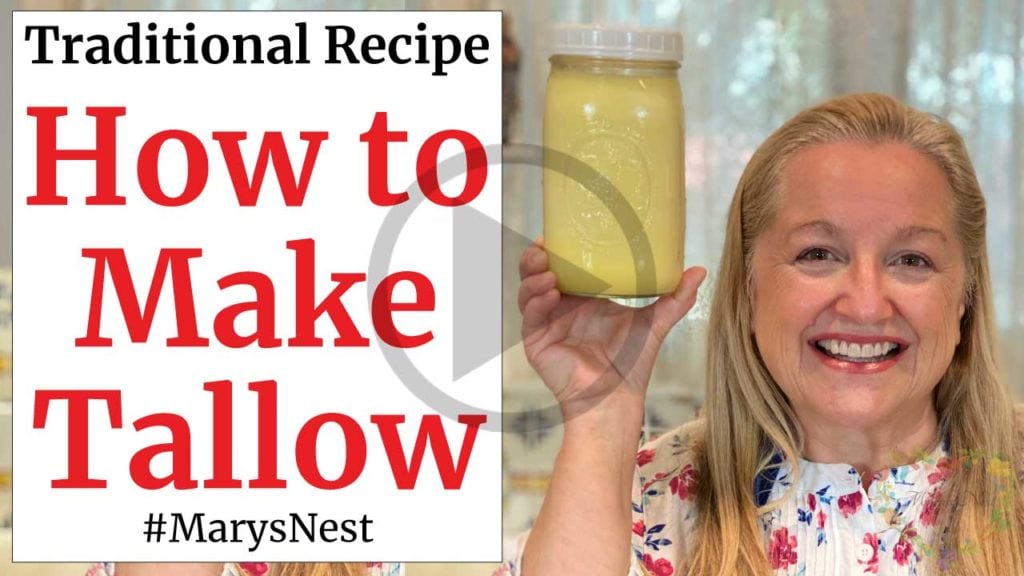
Learn how to render beef fat to make tallow. Beef tallow is a highly nutritious fat, and you can use it as a cooking fat in so many recipes. It should be a staple in every traditional foods kitchen, especially yours!
*Affiliates note: As an Amazon Associate I earn from qualifying purchases. My videos and blog posts may contain affiliate links to products and services. If you click through and make a purchase, I'll receive a small commission. It does not affect the price you pay.
What is Tallow?
Tallow is rendered beef fat, but just not any beef fat. Beef tallow is rendered from suet. Technically, you can also use the term tallow to describe fat rendered from the suet of other ruminant animals. However, tallow most commonly refers to suet rendered from beef, specifically cattle.
Tallow is a nutritious fat that contains a multitude of vitamins and minerals, including:
- Vitamins: A, B1, D, E, and K
- Minerals: Selenium and Choline
How Can You Use Tallow?
Tallow is a superb fat for high-temperature cooking, since tallow's smoke point is 420°F. Some of the best ways to use tallow are:
- Deep frying, such as fried chicken and french fries
- Pan sautéing vegetables, especially greens
- Coating raw vegetables before roasting
- Using as an ingredient to make nutrient-rich pemican
Tallow also makes an excellent substitute for other ingredients, including:
- Any savory dish (Use instead of vegetable oil or butter)
- High-temperature cooking (Use instead of vegetable oil)
- Biscuits or other savory baked goods (Use instead of lard)
What is Suet?
If tallow is rendered from suet, what is suet? Suet is the fat around the internal organs of a cow. The highest quality suet comes from the fat around the cow's kidneys, and you can render this suet to make the most nutritious tallow. And keep in mind that the very best suet comes from animals that are grazed on grass.
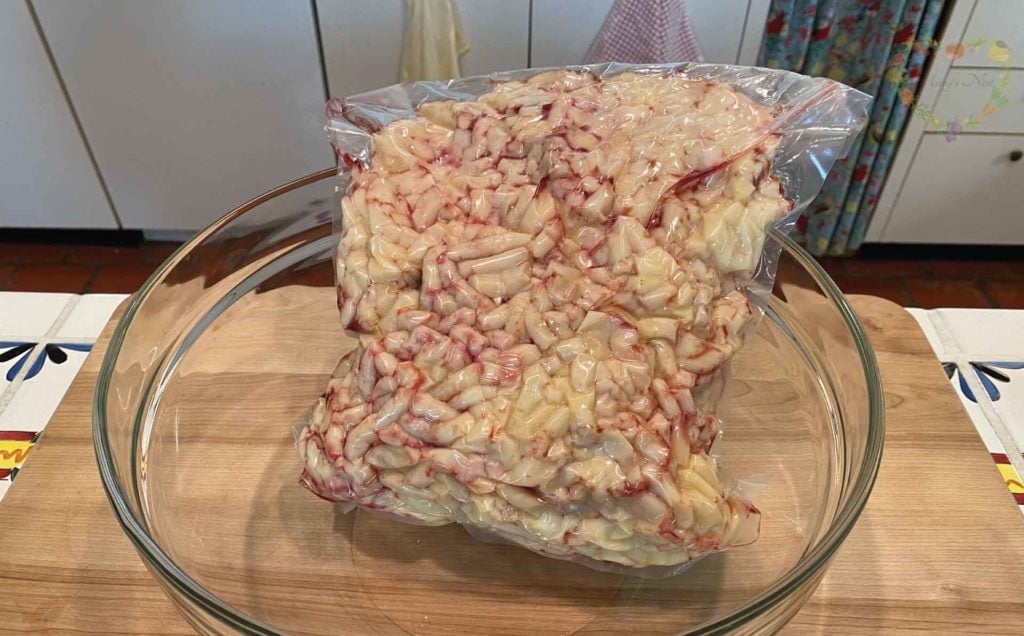
For a source of suet, try your local farmer's market, as not all grocery stores carry suet, even in the back. Later in this blog post, I talk about where I get my suet. (If you're not ready to make it homemade, you can buy ready-made tallow too.)
Can You Render Beef Fat That Is Not Suet?
So if you want to make real tallow, you need to render suet. But what if you can't find a source for suet? In that case, you can choose another type of beef fat to render, such as the trimmings from the muscle meat of beef. And by picking a non-suet alternative, you'll create a cooking fat that's similar to tallow.
Even though many people will refer to the cooking fat created from a non-suet alternative as tallow, it is technically not a traditional form of tallow. However, this mock tallow is still highly nutritious and works well for high-temperature cooking.
For a source of non-suet beef fat, you can ask your grocery store butcher to sell you the fat trimmings that he has removed from various cuts of beef, such as a roast. You can also collect the fat when you trim the beef that you get from your farmer's market or local rancher.
Preparing to Render Suet to Make Tallow
Whether you are rendering suet or beef trimmings, you first need to cut the fat into cubes about one inch in size. You can also ask your butcher to run these fats through a meat grinder, if available, so you can skip having to create the fat cubes yourself.

If you are cutting up your own fat, specifically beef trimmings, be sure to remove as much meat from the trimming as possible.
Three Ways to Render Suet into Tallow
You can render suet or beef fat trimmings into tallow using one of three kitchen appliances:
- Oven
- Slow cooker
- Stovetop
In my tutorial video, I show you how to render suet in the oven. And in my printable recipe, I also explain how to render suet on the stovetop or in a slow cooker.
The process of creating tallow is similar no matter which appliance you choose. Here are the basic steps that I show you for rendering suet in your oven:
- Put your suet (or beef fat trimmings) into a heavy-weight pot. (I like to use an enameled cast-iron Dutch oven.)
- Place the pot on the middle rack in your oven preheated to 225°F.
The temperature to render suet into tallow is crucial. Do not rush this process. How long it will take to render the suet depends on how much you have. I rendered five pounds of suet in the oven, and it took between five to six hours.
Here's a picture of how the inside of the Dutch oven looks after about an hour and a half in the oven:

Do I Need to Add Water to Make Tallow?
As you read old cookbooks or search the Internet for recipes on how to make tallow with suet, you may find instructions that tell you to add water to your pot or slow cooker to prevent the suet from burning. This is completely unnecessary.
If you have to add water during the rendering process to prevent your suet from burning, that means that your temperature is too high! Set your temperature to 225°F or to the lowest setting on your stovetop or slow cooker. By keeping your appliance at the right temperature, you will not need to add any water to your rendering suet.
How to Strain Tallow
Once you have completely rendered your suet or beef fat trimmings, congratulations! You now have tallow, which looks like yellow liquid fat when you take it out of the oven.
Now, it's time to strain the mixture, since your Dutch oven will contain your liquid tallow and bits of debris. This debris includes impurities and small pieces of crispy kidney meat (or muscle meat) that have sunk to the bottom. These crispy bits are often referred to as cracklings.
Just pour the mixture from your Dutch oven through a fine-mesh strainer placed over a heatproof bowl. You'll wind up with beautiful and nutritious beef tallow in your bowl. Liquid gold!
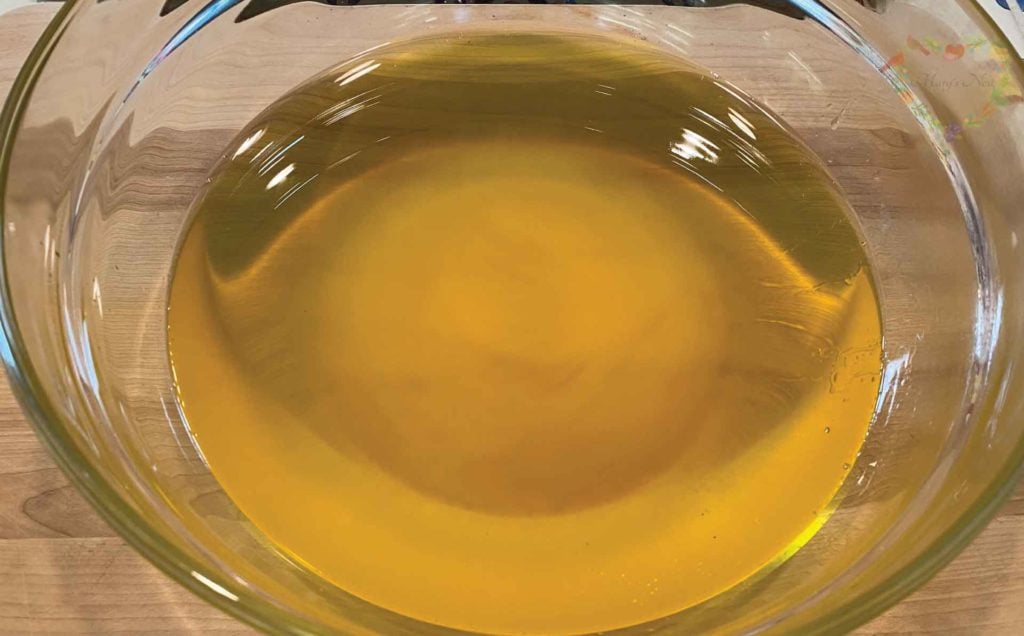
The fine mesh strainer will catch the cracklings. Although not as popular as pigskin cracklings, some people will eat these beef cracklings or use them as a delicious treat for their dog. 😊
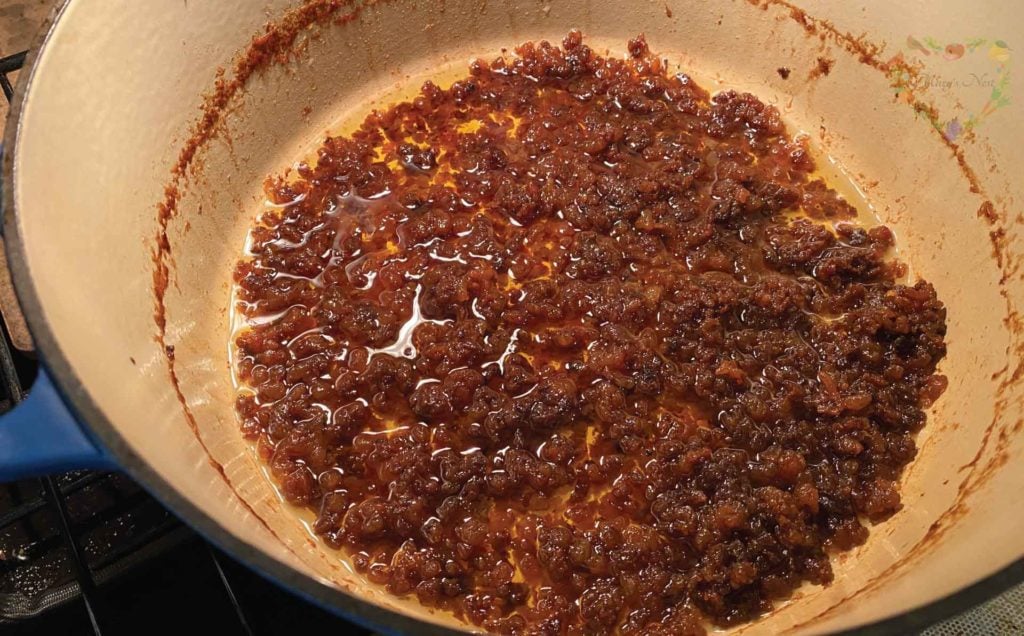
What Is the Shelf Life of Tallow?
Tallow has a long shelf life. You can keep it at room temperature in an airtight container for at least one year. However, there are additional ways that many cooks believe you can extend your tallow's shelf life beyond one year:
- Extended Pantry: If you've strained all of the cracklings and other impurities from home-rendered tallow and you're using an airtight container to store it, your tallow could have a much longer shelf life in your dark, cool extended pantry than just one year.
- Refrigerator or Freezer: If you can refrigerate your tallow, or better yet, freeze it, your tallow's shelf life could be almost infinite.
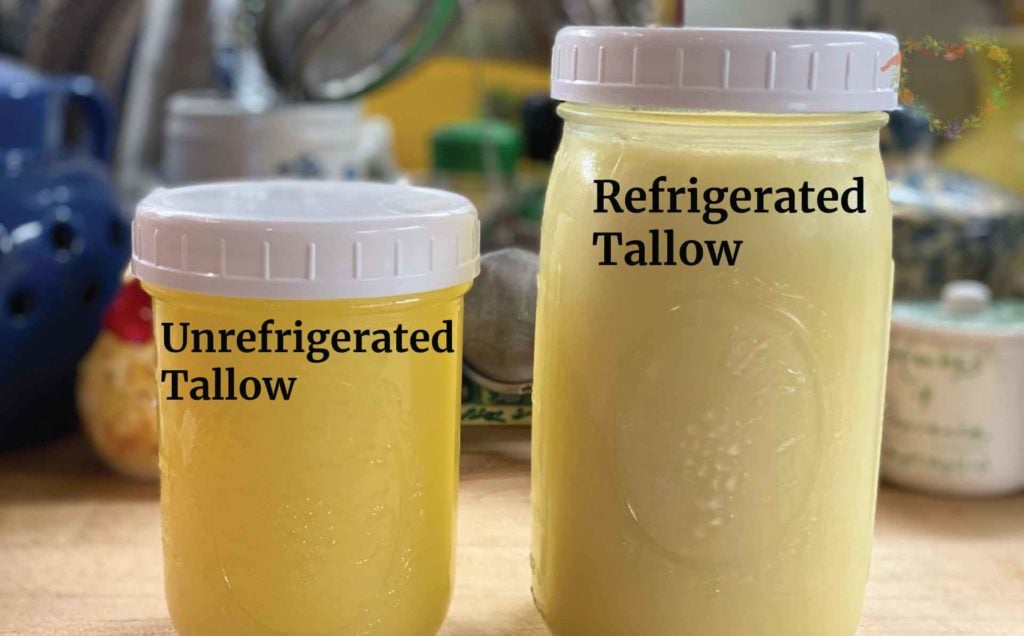
Can Tallow Become Rancid?
By itself, tallow doesn't go rancid quickly. However, it is more likely to oxidize very slowly over time and lose some of its nutritional value.
As with any fats, your nose knows. If your tallow still smells pleasantly meaty, it's most likely still fresh. If it ever develops an off or unpleasant odor, it may be time to discard it.
Real Tallow Versus Mock Tallow Shelf Life
Keep in mind that real tallow rendered from suet will be quite hard at room temperature and have the longest shelf life.
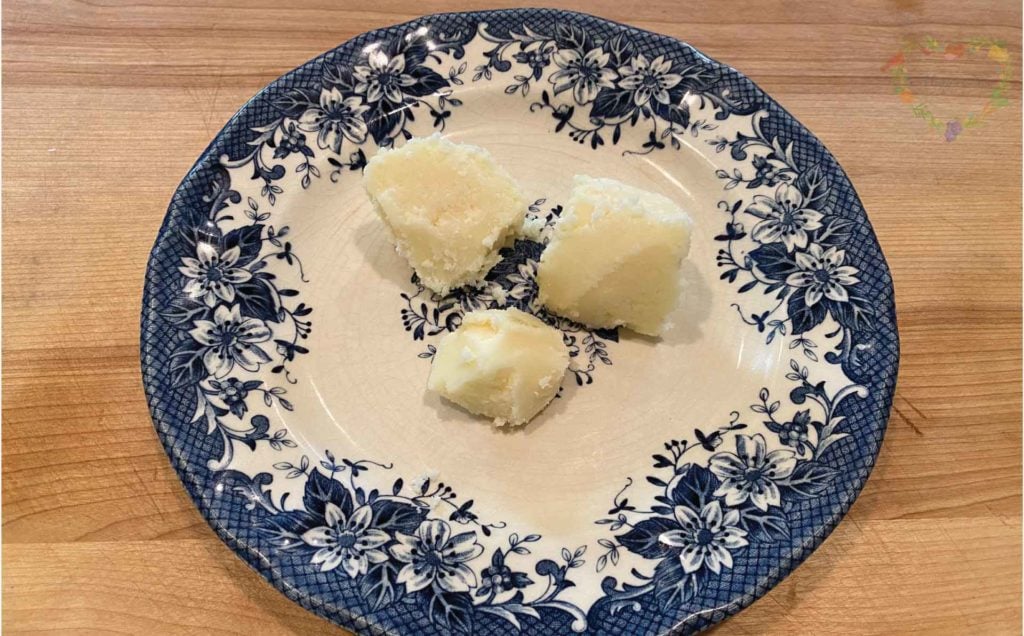
The mock tallow rendered from beef fat trimmings will be slightly softer at room temperature. As a result, it will look similar in texture to butter, and it will have a somewhat shorter shelf life than real tallow. However, you can follow the same guidelines for refrigeration and freezing that will help extend its shelf life.
Can You Use Tallow for Making Candles or Soap?
If you are a crafter and like to make homemade candles or soap just like our ancestors, you want to make sure that you use real tallow that has been rendered from suet.
Tallow's hard consistency at room temperature makes it perfect for making candles or soap.
Can You Use Beef Tallow for Beauty Products?
I am fond of saying, "Yes, ladies, we are putting beef fat on our faces!" But all kidding aside, you can use beef tallow as the main ingredient in your homemade beauty creams, as I show you in the following recipes.
Just as is the case for making candles and soap, you want to make sure that you use real tallow when using it as an ingredient in homemade beauty products.

- Learn How to Make Tallow Balm – Easy DIY Homemade Moisturizer
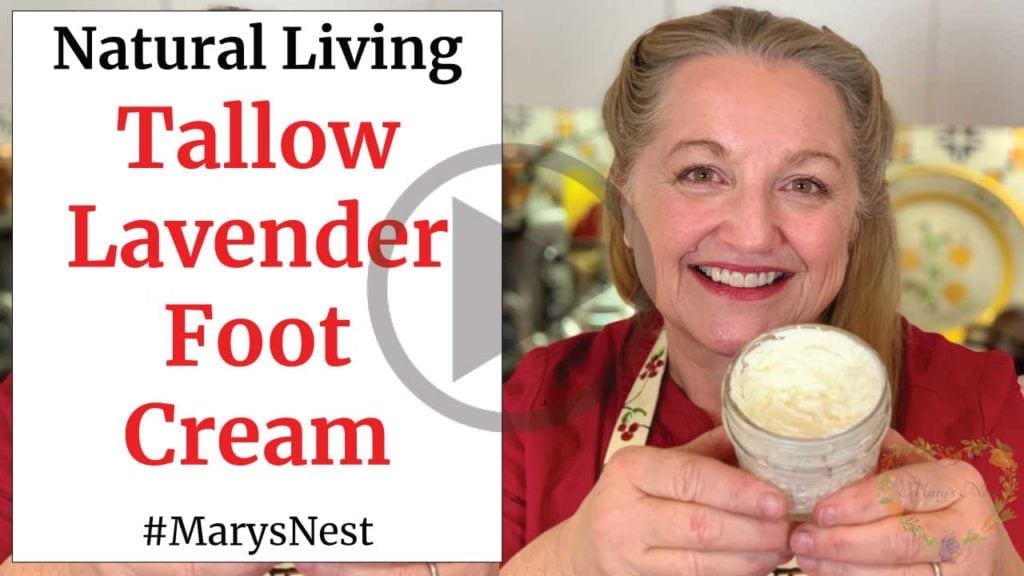
- Foot Cream for Cracked Heels – Homemade Whipped Tallow Lavender Foot Cream
More Healthy Animal Fats Recipes
Now that you know how to render suet to make tallow, be sure to try your hand at rendering chicken fat. It's easy to do on the stovetop and very flavorful! And it's a must-have if you like to make homemade chopped chicken livers.
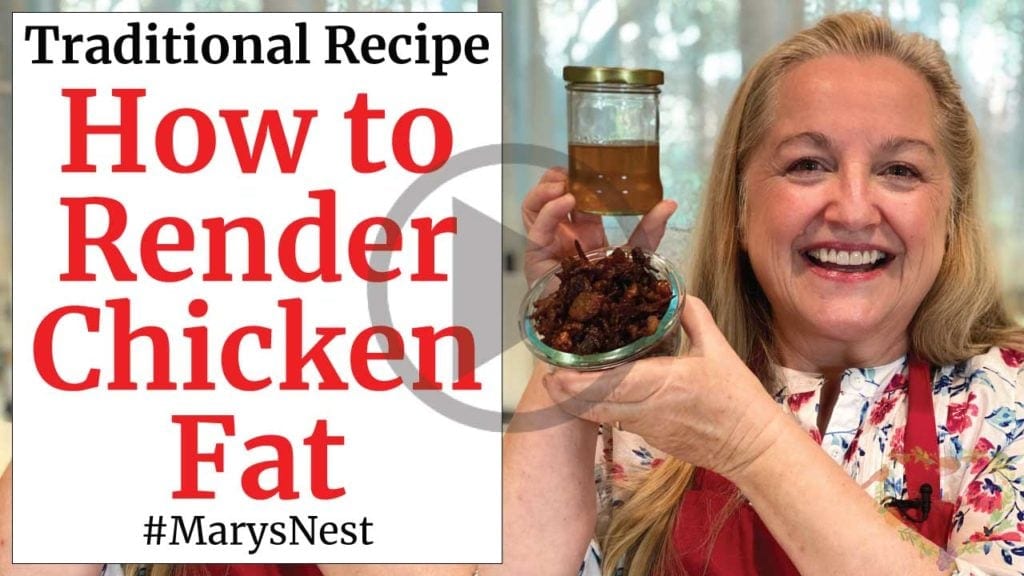
- How to Make Schmaltz – Rendered Chicken Fat
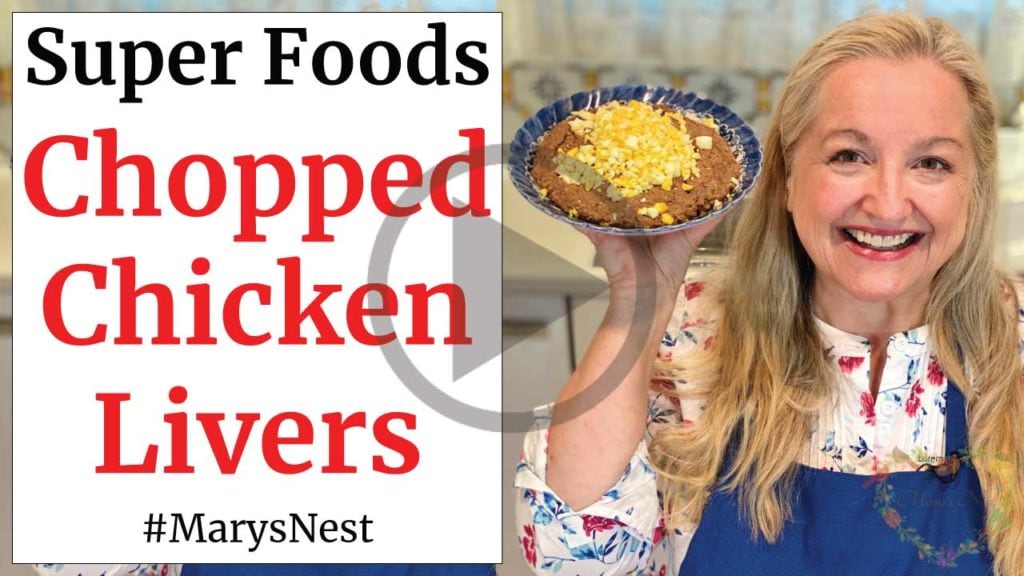
- How to Make Chopped Chicken Livers
Looking for Beef Suet or Beef Tallow?
If you can't find beef suet or beef tallow in your neighborhood supermarket or farmer's market, check out US Wellness Meats. I found my suet for rendering from their site.
- Use discount codeMARYNEST and my link to save 15% off regular-priced items on your US Wellness Meats order. You can shop for:
- Tallow and Suet
- Beef Bones (Great for making bone broth!)
- Grass-Fed Beef
- Free-Range Whole Chickens
This post is not sponsored. I'm a long-time customer of US Wellness Meats because I have always been impressed by the quality of their products. Check out my US Wellness Meats unboxing video to see the types of products you can get, including bones for beef bone broth!

- US Wellness Meats Unboxing – Beef Bones for Bone Broth
Download Your Free 36-Page Pantry List
As you transition from a processed foods kitchen to a traditional foods kitchen, be sure to download my FREE 36-Page Essential Traditional Foods Pantry List. This list contains everything you need to get started stocking your traditional foods pantry.
Plus, I also include lots of recipe links to help you create delicious and nutritious meals using everything you've stocked up on!

- FREE 36 Page Traditional Foods Pantry List – Printable Pantry Staples List
Kitchen Academy Videos
Are you looking for more traditional foods videos? If so, I invite you to join the Traditional Foods Kitchen Academy. Members of this optional paid YouTube community get access to exclusive videos, live streams, and other members-only perks. Plus, your YouTube comments include a special members-only badge.
In the following members-only video, I talk about The Importance of Cooking with Traditional Fats: Animal Fats.
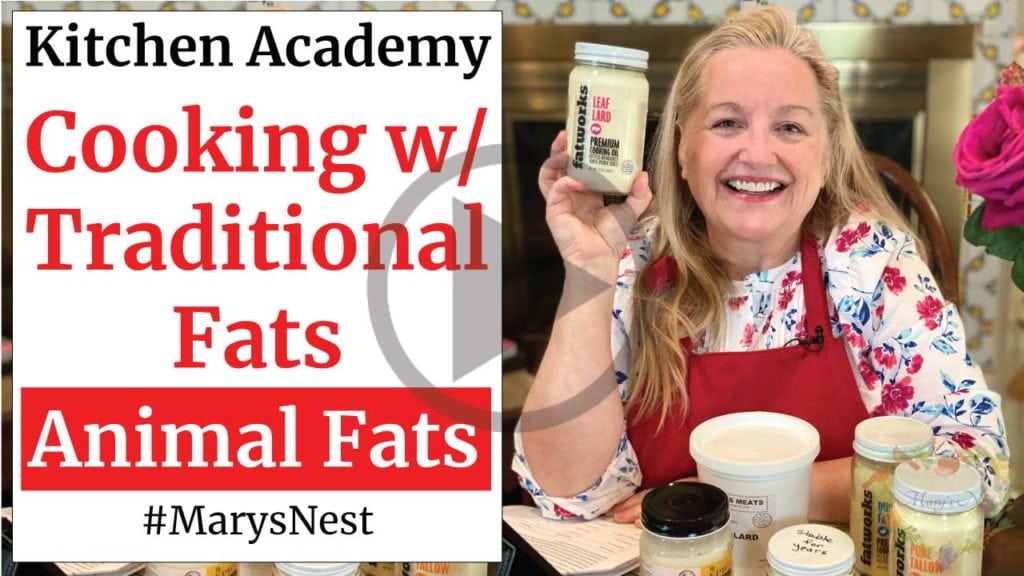
- The Importance of Cooking with Traditional Fats: Animal Fats
Stay in Touch with Mary's Nest
- Subscribe to My YouTube Channel for Traditional Foods Videos (Free) - When you subscribe, be sure to click on the notification bell that will let you know each time I upload a new video.
- Subscribe to Mary's Traditional Foods Newsletter (Free) - Get a free eBook for signing up: How to Stock Your Essential Traditional Foods Four-Corners Pantry.
- Join the Traditional Foods Kitchen Academy (Optional Paid) - For more detailed videos, live streams, and exclusive members-only perks, join my YouTube membership community.
I look forward to having you join me in my Texas Hill Country Kitchen!
Love,
Mary ♥
Trending Posts on Mary's Nest
How to Render Beef Fat to Make Tallow
Learn how to render beef fat to make tallow. Beef tallow is a highly nutritious fat, and you can use it as a cooking fat in so many recipes.
Servings: 2 quarts
-
Large Dutch oven (or other oven proof pan with a lid)
-
Slow Cooker, optional (See "Recipe Notes" below.)
- 5 pounds Beef suet or beef fat trimming
-
Cut suet or beef fat trimmings into 1-inch cubes and place into Dutch oven.
-
Cover Dutch oven and place on the middle rack of an oven preheated to 225°F.
-
After one hour, open the oven and carefully remove the lid from the Dutch oven using a potholder. Stir the contents of the Dutch oven, place the lid back on the Dutch oven, and close the oven door to allow the suet or beef fat trimmings to continue to render.
-
Periodically, check on the progress of the rendering process. After five to six hours, the fat should be rendered into tallow.
-
You will know that your suet has completely rendered into tallow when there is predominately a yellow liquid in the pan, and all that remains in terms of solids are brown bits ("cracklings") that have sunk to the bottom of the pan.
-
Remove the Dutch oven from the oven.
-
Strain the tallow from the contents of the Dutch oven using a fine-mesh strainer placed over a heatproof bowl. (See video.). The strainer will catch the cracklings, which you can reserve to eat as a snack.
-
Decant the tallow into airtight quart-sized jars. You can leave one jar at room temperature that you can use for cooking. For long-term storage, you can refrigerate or freeze the second jar. If you freeze the tallow, make sure that you leave at least one inch of headspace in the jar to allow for expansion.
-
At room temperature, the tallow will have a shelf life of at least one year.
-
If refrigerated or frozen, the shelf life of the tallow will be extended significantly.
-
For instructions on how to render suet or beef fat trimmings on the stovetop or in a slow cooker, see the "Recipe Notes" below.
Stovetop Instructions:If you want to render the suet or beef fat trimmings on the stovetop, follow the basic instructions in the recipe. However, instead of placing the Dutch oven into the oven, put it on the stovetop.
You will want to set your stovetop temperature to low and periodically stir the suet to make sure that it does not stick to the bottom of your pan. Suet will render much quicker on the stovetop, so watch it closely. It can be ready to strain in as little as 2 hours.
Slow Cooker Instructions: If you want to render the suet or beef fat trimmings in a slow cooker, follow the basic instructions in the recipe. However, instead of placing the fat into a Dutch oven, put it into the crock of your slow cooker. Place the lid on the slow cooker and set the cooking setting to Low. After approximately five to six hours, the fat should be completely rendered.
Find this recipe and video at https://marysnest.com/how-to-make-beef-tallow/
Copyright © 2021 Mary's Nest, LLC, All Rights Reserved
Shop for items used in this blog post or video
Favorite Kitchen Supplies
- Favorite Aprons
- Large Dutch Oven
- 10-Piece Glass Bowl Set
- 10-Quart Slow-Cooker
- Stainless Steel Strainer
- Spatula Spoon
- Large Measuring Cup
- 2-Cup Glass Storage Jars with Lids
More Kitchen Supplies with Discount Codes
- Mockmill Grain Grinder and Whole Grains (including Einkorn, Emmer, and Spelt)
Use my Mockmill affiliate link for a special one-time 5% discount on Mockmill Stone Grain Mill products, including Ancient Grains, like Einkorn, Emmer, and Spelt. (The Mockmill discount will appear when you checkout.)
- Masontops Fermentation Kit
Use promo code MARYSNST for a one-time 15% off Masontops and Breadsmart products on Amazon.com.
Amazon Shop and Shopping Guide
- Visit Mary's Nest Amazon Shop
- Visit my Shopping Guide page
Learn where I buy my Beef Bones, Wild-Caught Fish, Sprouted Grains, and more…and learn about Special Discounts for Mary's Nest visitors, including from US Wellness Meats, Vital Choice, Masontops, and Breadsmart.
Recommended Reading
- Fat: An Appreciation of a Misunderstood Ingredient
- Prepper's Pantry: Build a Nutritious Stockpile to Survive Blizzards, Blackouts, Hurricanes, Pandemics, Economic Collapse, or Any Other Disasters
- Emergency Food Storage & Survival Handbook: Everything You Need to Know to Keep Your Family Safe in a Crisis
- Food Storage 101 Where do I begin? (Cookin' With Home Storage)
- Self-Reliance: Recession-Proof Your Pantry
- Nourishing Traditions: The Cookbook that Challenges Politically Correct Nutrition and Diet Dictocrats
Trending Posts on Mary's Nest
- Nourishing Fats: Why We Need Animal Fats for Health and Happiness
** Disclaimer: I am not a medical doctor, a medical professional, a dietician, or a nutritionist. All content found on the MarysNest.com website, including text, images, videos, eBooks or eGuides, social media, or other formats, were created solely for informational purposes only. The content is not intended to be a substitute for professional medical advice, diagnosis, or treatment. Always seek the advice of your physician or other qualified healthcare provider with any questions you may have regarding a medical condition or proper nutritional advice. Never disregard professional medical advice or delay in seeking it because of something you have watched in a video or read on this website. Use caution when following the recipe in this video. The creator and publisher of this video and website will not be held responsible for any adverse effects that may arise from the use of this recipe and method or any other recipe and method on this website or corresponding video channel.
Source: https://marysnest.com/how-to-make-beef-tallow/
0 Response to "Can You Make Beef Rinds From Beef Fat"
Post a Comment